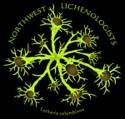Bruce McCune wrote:
There hasn't been as much attention to high-elevation lichens in the PNW as one would expect. Katie Glew did her thesis on a set of alpine sites in Washington; Bruce Ryan published one or two papers on Chowder Ridge in the North Cascades; I wrote a paper on alpine summits in the Bitterroot Range in Montana and Idaho; there was a group paper on some high country in the Wallowas (Matterhorn and Ice Lake). There are probably some other publications that I am forgetting, but not many. A number of us have made numerous incidental collections in the high country, and many of these have very interesting species -- for example the shoulders of Mt Hood that get blown free of snow, such as Barrett Spur.
What is really missing is study of the tops and high ridges of the highest peaks. I have been to only one, South Sister. Up high on the loose rock the lichens were almost absent, but the stable outcrops near the top had quite a lot. Lichenologists tend to be active outdoors, but not so much into mountaineering.
Seems like something could be worked out to collaborate with the Mazamas. If the mountaineers were trained in what to look for and how to collect, maybe there could be a productive group effort where actual mountaineers gathered specimens and lichenologists helped to identify them. Most of the diversity would be crustose species on rock, requiring compound scopes, and some might require thin-layer chromatography for IDs.
Sorry for the long delay - I'm finishing my PhD so have been working on other science. =)
Bruce, do you have titles or citations for those articles? How is access to journals?
Some sort of partnership with the Mazamas could definitely be arranged, with a range of possibilities and involvement (planned survey, convenience sampling, etc.). It should be noted that the Mazamas offer multiple research grants every year, $3500 to POs and $2000 to students. Applicants need not be Mazamas members. Feb 03 and Feb 10 2017 are the upcoming submission deadlines so there is time available to write a grant.
http://mazamas.org/resources/research-grants/

